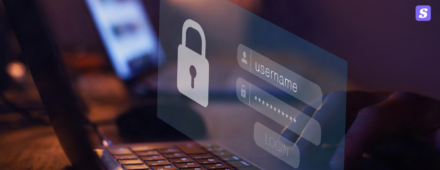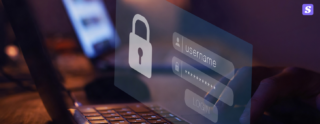Online banking has revolutionized the way we manage our finances, offering convenience and access at our fingertips. Whether you’re paying bills, transferring money, or simply checking your balance, online banking makes life easier. However, with this convenience comes the risk of cyber threats, from phishing attacks to malware that targets your sensitive information. Ensuring a secure online banking experience is vital to protect your personal data and financial assets.
In this post, we’ll cover essential tips to help you stay safe while banking online, so you can enjoy the convenience without compromising security.
Choose a Strong Password and Enable Two-Factor Authentication
One of the simplest but most effective ways to protect your online banking account is by using a strong, unique password. Avoid using easily guessable information, such as your name, birthday, or common words. Instead, create a password that combines uppercase and lowercase letters, numbers, and special characters.
Additionally, enable two-factor authentication (2FA) whenever possible. This adds an extra layer of protection by requiring you to enter a code sent to your phone or email when logging in. Even if someone steals your password, 2FA can prevent unauthorized access to your account.
Ensure Your Device Is Secure
Before logging into your online banking account, make sure your device is secure. Regularly update your operating system, browser, and apps to ensure they are protected against known vulnerabilities. Many cybercriminals exploit security flaws in outdated software, so keeping everything up to date is crucial.
Additionally, install a reputable antivirus program with banking protection features, like SiyanoAV. Antivirus software helps detect and block malware, spyware, and other threats that target sensitive financial information. SiyanoAV’s Safe Online Banking feature provides a secure environment for banking transactions, ensuring your data is encrypted and protected from cyber threats.
Avoid Public Wi-Fi for Banking Transactions
While it may be tempting to check your bank account while sipping coffee at your favorite café, using public Wi-Fi for online banking is risky. Public Wi-Fi networks are often unsecured, making it easy for cybercriminals to intercept your data and steal your information.
If you must access your bank account on the go, use a secure cellular connection or a trusted virtual private network (VPN). A VPN encrypts your internet traffic, ensuring that even if you’re on a public network, your data remains safe from hackers.
Monitor Your Accounts Regularly
Regularly checking your bank statements and transaction history is an important habit for maintaining online banking security. The sooner you notice unauthorized transactions, the quicker you can respond and mitigate the damage.
Set up alerts through your bank to receive notifications for suspicious activity, such as large withdrawals or attempts to log in from unfamiliar locations. By staying vigilant and monitoring your account, you can quickly detect and report any suspicious behavior.
Watch Out for Phishing Scams
Phishing scams are one of the most common ways cybercriminals steal login credentials for online banking accounts. These scams often involve fraudulent emails or messages that appear to come from your bank, asking you to verify your account information or login credentials. Clicking on these links can lead you to a fake website that steals your sensitive data.
To avoid falling victim to phishing scams, never click on links or download attachments from unsolicited emails or text messages. Instead, go directly to your bank’s official website by typing the URL into your browser. Always verify the sender’s email address and double-check any suspicious communications with your bank before responding.
Log Out After Every Session
After you finish your online banking session, always log out—especially if you’re using a shared or public computer. Closing the browser window doesn’t necessarily log you out, and leaving your account open can give unauthorized users easy access to your financial information.
Make it a habit to manually log out and clear your browsing history if you’ve accessed your bank account on a shared device. This simple step can help prevent unauthorized access to your account.
Use Your Bank’s Official App
If your bank offers a mobile app, it’s a good idea to use it instead of accessing your account through a web browser. Banking apps are often more secure than browser-based access because they have built-in security features designed specifically for financial transactions.
Download the app from your bank’s official website or from a reputable app store. Ensure the app is up to date, as updates often include important security patches.
Enable Alerts for Unusual Activity
Most banks offer alert systems that notify you via email, SMS, or push notifications if any suspicious or unusual activity occurs in your account. Enabling these alerts allows you to take immediate action in case of unauthorized transactions, ensuring that your account remains secure.
Many antivirus solutions, like SiyanoAV, also offer financial protection features that notify you of any suspicious online banking activity, providing an added layer of security.







Leave a Comment